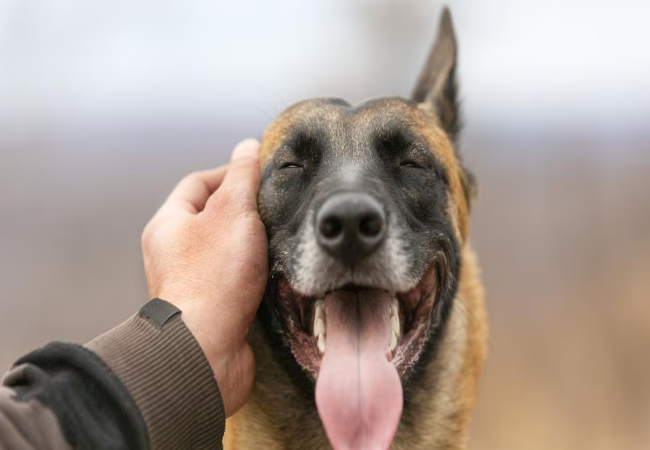Vet Guide 2025 How to Properly Pet a Dog Techniques & Safety 🐶🩺

In this article
Vet Guide 2025 How to Properly Pet a Dog Techniques & Safety 🐶🩺
By Dr. Duncan Houston BVSc
Petting your dog may seem simple, but did you know there's a right way to do it? 👐 I’m Dr Duncan Houston BVSc, and in this detailed guide, we’ll explore how to pet dogs safely and effectively—boosting your bond and wellbeing—with added support from Ask A Vet. ✨
1. Why Proper Petting Matters
- 💞 Physiological benefit: Petting releases oxytocin, serotonin, and dopamine in both dogs and humans—reducing stress and strengthening bonds.
- 🐕 Mental calmness: In shelters, just 15 minutes of petting calmed dogs and increased adoption success.
- 🧠 Human brain response: Studies show petting increases relaxation-related brainwaves and emotional focus.
2. Approaching a Dog Safely ✅
- 👋 Always ask the owner first.
- 🔹 Avoid looming—crouch to eye level and offer a fist to sniff rather than an open hand.
- 👀 Watch for calming signals—lip licks, looking away, yawns—indicating stress.
3. Best Places to Pet 🐾
- ✅ Chest, shoulders, base of neck, under chin—dogs prefer neutral, less vulnerable areas.
- ❌ Avoid the top of the head, muzzle, tail, and paws unless you're familiar with the dog’s preferences .
- 🐶 Belly rubs: Many dogs love them—these activate nerve reflexes and reduce stress, but consent is key.
4. How to Pet Correctly
- ✋ Gentle strokes—use open palm or soft fingers; avoid hard patting.
- 🎯 Pet for a few seconds, then pause; observe if the dog wants more.
- 👏 Let the dog guide—if they lean in, raise your hand; if they back off, stop.
5. Know When to Stop
- 🚦 Watch for signs of discomfort—lip licking, turning head, stiff body, yawning.
- 📵 If the dog moves away or avoids your hand, respect their space.
6. Emotional & Health Benefits
- ❤️ Lower cortisol (stress hormone), higher oxytocin and dopamine in humans.
- 🧘 In clinical studies, petting reduces students' stress significantly—within 10 minutes.
- 🐕 Dogs too experience calming physiological changes during petting.
7. Enriching the Experience with Ask A Vet,
- Ask A Vet app: Show a video of your petting sessions to assess comfort and bonding cues.
8. Training Children & Visitors
- Teach them to squat, ask permission, offer a closed fist, and pet gentle spots.
- Warning signs to look for: tail tucking, growling, avoiding touch.
- Build positive routines—short, calm petting sessions followed by treats or play.
9. FAQs
- Q: Do all dogs enjoy petting?
- No. Some are sensitive or reluctant. Respect individual preferences and signs.
- Q: Is petting good for anxious dogs?
- Yes—calming touch triggers relaxation responses; may help with anxiety.
- Q: What if my dog loves head scratches?
- Some do—observe reactions. If relaxed and leaning in, it can be fine, but often the middle to base of the head is safer.
10. Conclusion 💡
Proper petting builds trust, calms both you and your dog, and supports wellness in ways you might not expect. With mindful technique, attention to cues, and tools from Ask A Vet, your daily touch can become a powerful act of love and healing. 🤝🐾






